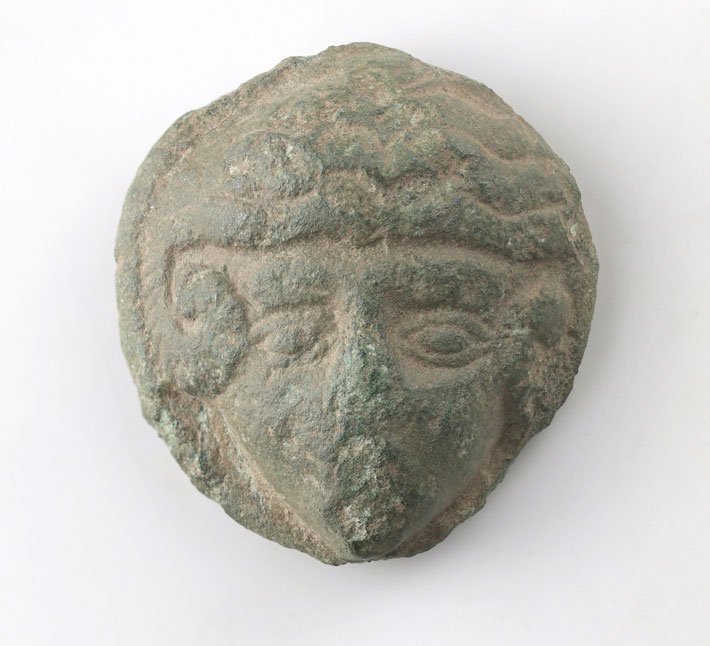 RINGSTED, DENMARK—Live Science reports that a miniature bronze alloy fitting bearing a portrait of Alexander the Great was discovered on an island in Denmark by a pair of metal detectorists who were conducting a survey. Alexander the Great succeeded his father as the king of Macedon and eventually created a far-flung empire before his death in Babylon in 323 B.C. at the age of 32. The one-inch round fitting, known as a bracket, shows an engraved image of a man with wavy hair wearing a crown made up of twisted ram horns, which are typical imagery of the ancient ruler. “The image is almost identical to another bracket portrait found years ago that contains the same stylized image,” said archaeologist Freerk Oldenberger of Museum West Zealand, where the newly unearthed bracket is being held. It has been dated to the early third century A.D., during the rule of the Roman emperor Caracalla (reigned A.D. 211–217), and its metal has a high lead content, similar to metal found in Roman bronze statuettes. “It’s possible that a statuette was melted down to make this portrait,” Oldenberger explained. “We know that [Caracalla] was completely obsessed with Alexander the Great and was interested and inspired by him, since he was the greatest conqueror of that time period,” he added. This bracket may have decorated a Roman shield or a sword belt. To read about the search for Alexander's tomb, go to "In Search of History's Greatest Rulers: Alexander the Great, King of Macedon."
RINGSTED, DENMARK—Live Science reports that a miniature bronze alloy fitting bearing a portrait of Alexander the Great was discovered on an island in Denmark by a pair of metal detectorists who were conducting a survey. Alexander the Great succeeded his father as the king of Macedon and eventually created a far-flung empire before his death in Babylon in 323 B.C. at the age of 32. The one-inch round fitting, known as a bracket, shows an engraved image of a man with wavy hair wearing a crown made up of twisted ram horns, which are typical imagery of the ancient ruler. “The image is almost identical to another bracket portrait found years ago that contains the same stylized image,” said archaeologist Freerk Oldenberger of Museum West Zealand, where the newly unearthed bracket is being held. It has been dated to the early third century A.D., during the rule of the Roman emperor Caracalla (reigned A.D. 211–217), and its metal has a high lead content, similar to metal found in Roman bronze statuettes. “It’s possible that a statuette was melted down to make this portrait,” Oldenberger explained. “We know that [Caracalla] was completely obsessed with Alexander the Great and was interested and inspired by him, since he was the greatest conqueror of that time period,” he added. This bracket may have decorated a Roman shield or a sword belt. To read about the search for Alexander's tomb, go to "In Search of History's Greatest Rulers: Alexander the Great, King of Macedon."
Miniature Portrait of Alexander the Great Found in Denmark
